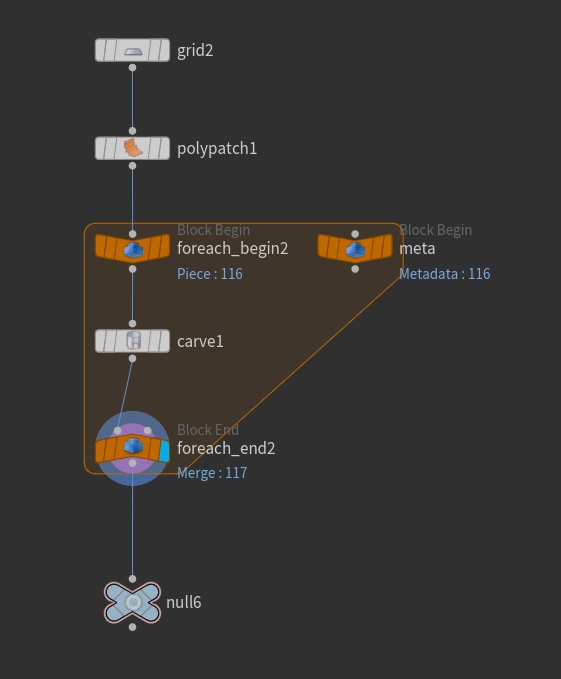While Houdini allows splines/lines to grow through the carve node, it gets tricky when a bunch of splines need to be grown over time at varying speed.
This code might help you if you are in such a position.
fit01(rand(detail("../meta","iteration",0))*ch("slider")*2,ch("slider"),1)
Let's get right into it!
Drop a grid, size x= 2, y =10
Adjust rows or columns based on your preference, in this case i want to extract the columns so I pushed it to 50.
Mind you, I am only using a grid for the demo, what you decide to use is up to you.Drop a polypatch node for the extraction. choose columns in the connectivity property and tick "Output polygons".
- Drop a "foreach primitive" node. In the "foreach_begin" node click on "Create Meta Import Node". Rename the meta node of the foreach begin set of nodes to something shorter(optional but since it will be needed in the code, making it shorter is better. I made it "meta" in this case)
Now drop the carve node and pipe it between the "foreach_begin" node and the "foreach_end"
This is where the magic begins. in the carve properties, click on the parameter edit menu icon and choose edit parameter interface
- Drag a float parameter and add it to the existing parameters list, in my case it, I placed it under the "Second V" parameter. Now rename the "name" and "label" properties; i named both "slider", ticked the range option and changed its values from 0-10 to 0 -1. click apply and accept.
- Back in the carve parameter panel, depending on what you want to slide over, be it "First U" or "Second U", paste the code into it.
fit01(rand(detail("../meta","iteration",0))*ch("slider")*2,ch("slider"),1)
- Now slide your "slider" float parameter you added and there you have it. Animate the slider.
The code in detail
Important part:
detail("../meta","iteration",0): as you can see the "meta" node is referenced here. What the detail does is, it gets the value of each polygon or iteration: the default being 0The ch("slider") is the custom slider which multiplies with the detail value.
detail("../meta","iteration",0))*ch("slider")
Note that these alone will work, but will create an undesirable ramp across the splines and that is where the rand function comes in
rand(detail("../meta","iteration",0)) * ch("slider"). this uses the detail iteration value as a seed to create random values between 0 to 1. This will make the effect work nicely with the desired randomisation.
The only issue this presents is, some will get to the destination point and others wont. To counter this the fit01 function is used. It takes the randomised value, and uses the slider as min and 1 as max.
fit01(rand(detail("../meta","iteration",0))*ch("slider"),ch("slider"),1)
This works perfectly, speed is varied and they all get to the end point when the slider gets to 1.
This should be enough but in order to have some sort of speed control I added a multiplier of 2 to the slider value
fit01(rand(detail("../meta","iteration",0))*ch("slider")*2,ch("slider"),1) Totally optional.
So there you have it. have fun.










Top comments (0)